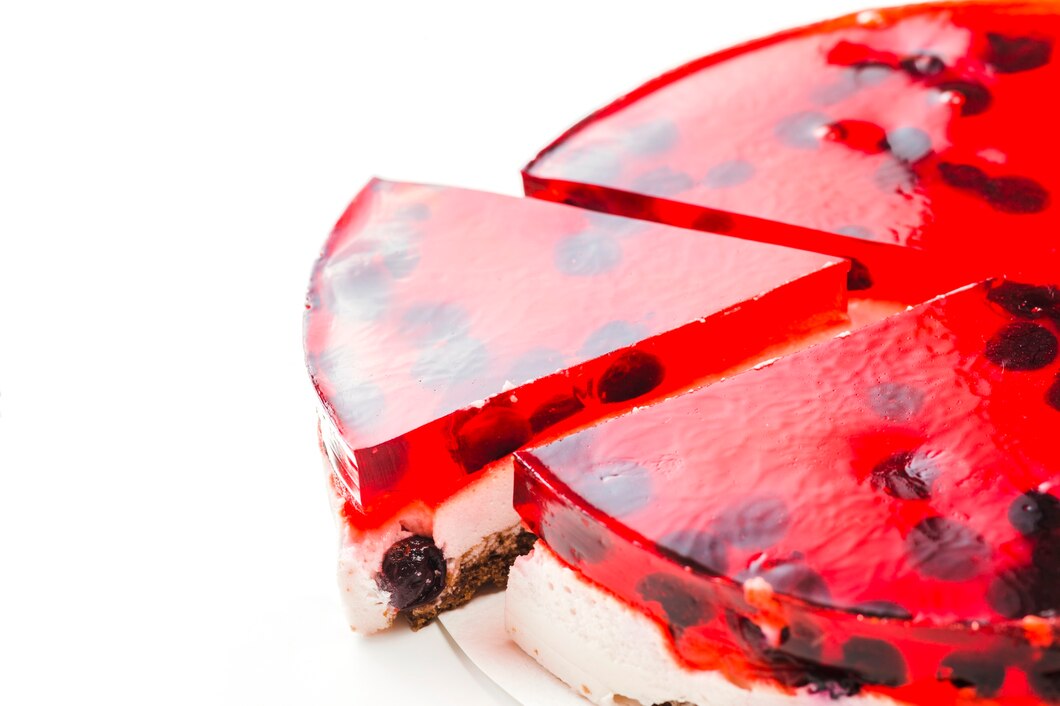Gelatin, derived from animal collagen, is commonly used to give jellies their signature texture. However, for vegans or those seeking plant-based alternatives, several substitutes can replicate the gel-like consistency without compromising dietary choices. Here are five excellent vegan substitutes for gelatin in jellies:
1. Agar-Agar
What It Is: Derived from red algae, agar-agar is a popular gelatin substitute in Asian cuisine.
How to Use It: Agar-agar sets more firmly than gelatin and doesn’t require refrigeration. Use it by dissolving in boiling water. Generally, 1 teaspoon of agar-agar powder can replace 1 tablespoon of gelatin.
Benefits: It’s high in fiber, which can aid digestion, and is available in powder, flake, or bar form, making it versatile for various recipes.
2. Carrageenan
What It Is: Extracted from red seaweed, carrageenan is often used in commercial food production to stabilize and thicken products.
How to Use It: It comes in two forms: iota and kappa. Kappa carrageenan is suitable for firm gels, while iota is used for soft gels. Dissolve carrageenan in hot liquid, and it will set upon cooling. Use 1 teaspoon of carrageenan to replace 1 tablespoon of gelatin.
Benefits: Carrageenan is a potent thickener, providing a similar texture to gelatin without animal products.
3. Pectin
What It Is: Pectin is a natural fiber found in fruits, particularly apples and citrus fruits. It’s commonly used in making jams and jellies.
How to Use It: Pectin requires sugar and acid to activate its gelling properties. Use it by mixing with sugar before adding to the liquid. The setting process involves heating the mixture. Follow package instructions for exact quantities, but typically, 1 tablespoon of pectin can substitute 1 tablespoon of gelatin.
Benefits: Pectin is widely available, often found in powdered form, and adds a fruitier flavor to jellies.
4. Cornstarch
What It Is: Cornstarch is a common thickening agent made from corn kernels.
How to Use It: While it doesn’t create a firm gel like gelatin, cornstarch can thicken liquids to a jelly-like consistency. Mix cornstarch with cold water to make a slurry before adding it to the hot liquid. Use 2 tablespoons of cornstarch to replace 1 tablespoon of gelatin.
Benefits: Cornstarch is inexpensive and readily available, making it a convenient option for many recipes.
5. Arrowroot Powder
What It Is: Arrowroot powder is a starch obtained from the roots of the arrowroot plant.
How to Use It: Like cornstarch, arrowroot acts as a thickening agent. Mix with cold water before adding to hot liquids. Use 2 tablespoons of arrowroot powder to substitute for 1 tablespoon of gelatin.
Benefits: Arrowroot powder creates a clear, glossy gel and is suitable for those who prefer grain-free options.
Switching to vegan jellies doesn’t mean sacrificing texture or taste. These five substitutes—agar-agar, carrageenan, pectin, cornstarch, and arrowroot powder—offer excellent alternatives to gelatin. Each has unique properties and benefits, making them versatile for various recipes. By experimenting with these options, you can create delicious, plant-based jellies that align with vegan dietary choices.








